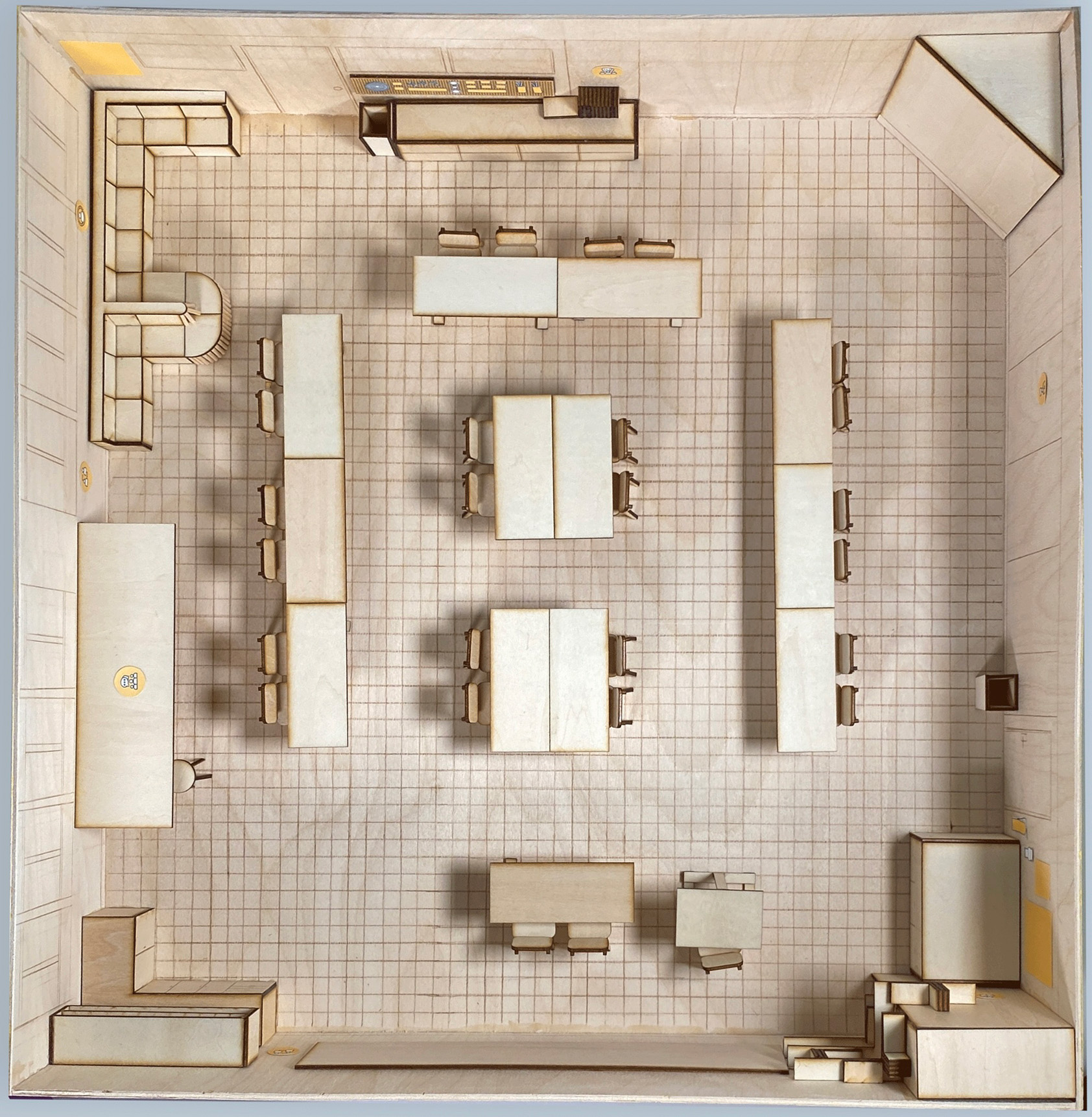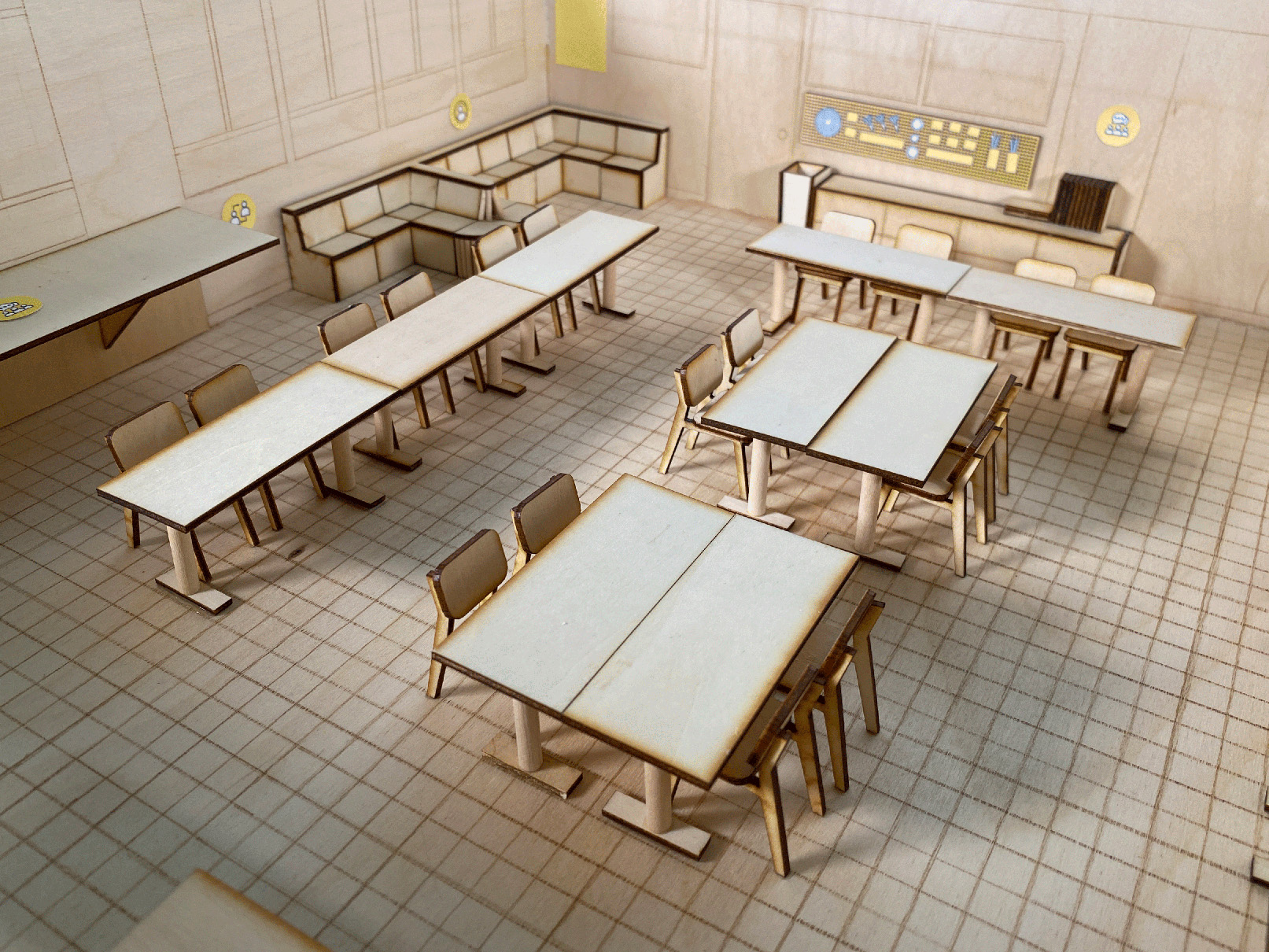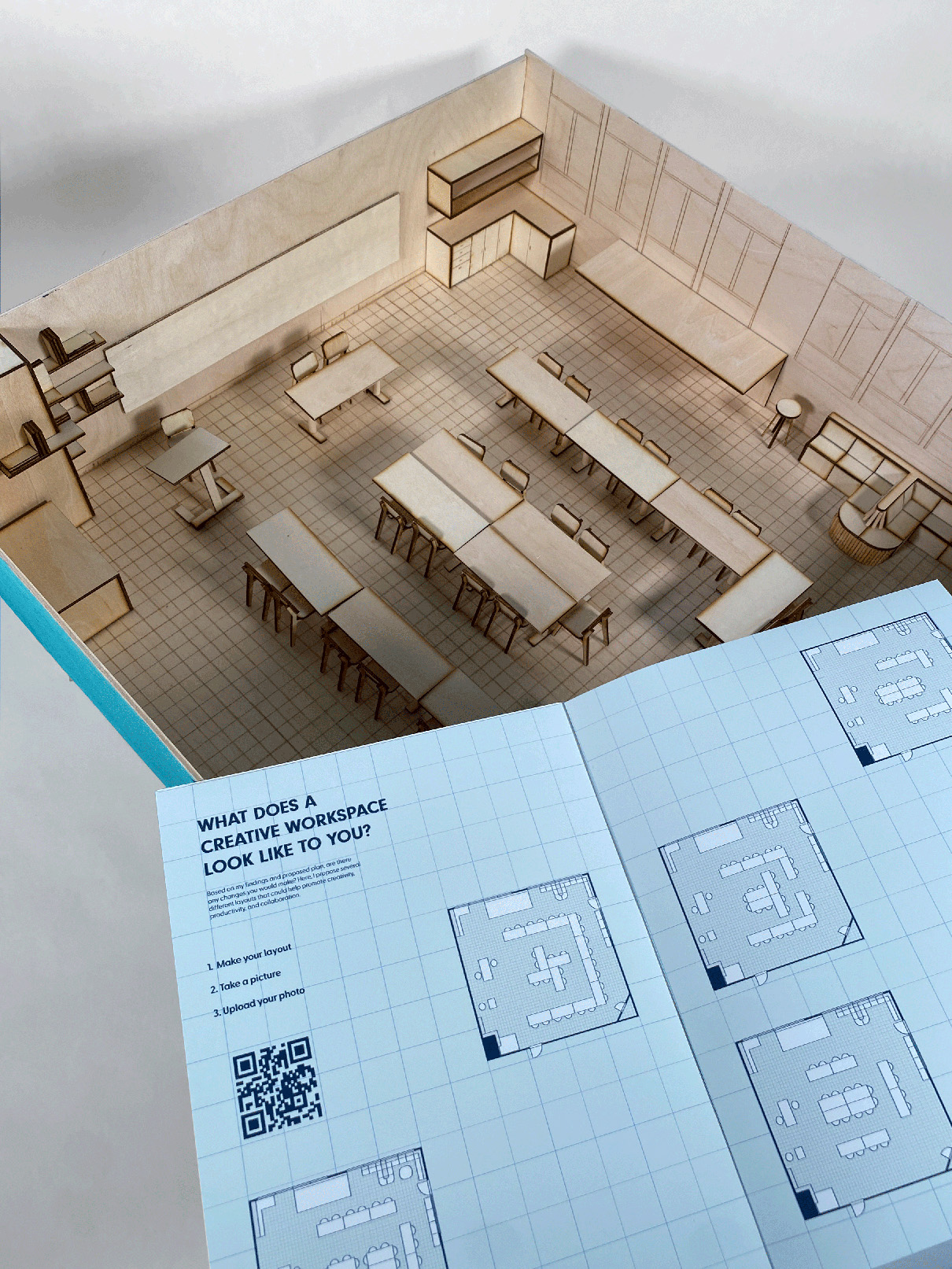A three-tiered model of IS 226, the BFA GD Lab, that analyzes the space in it's current state, offers a proposal of how the space can be transformed based on research findings, and allows viewers and future BFA students to experiment with layouts based on their interpretations of the space and their needs.
Abstract
A space can be defined as an architectural building, outdoor structures, and natural environments. These spaces have composed our lives for centuries, transforming and developing to meet our needs, they give meaning to the human experience, a meaning that can only be defined by our interpretation of the environments we inhabit. By exploring the environment of creative workspaces, specifically, I hope to visualize and contextualize how and why our behaviors and emotions are shaped by the places we work in.
To understand the reasoning behind how we are related to our workplaces, we dive into behavioral design, experience design, and psychology which can present insights to how and why we operate the way that we do and the ways we can make informed decisions for the future. In work environments, there are inputs like layouts, noise, lighting, or temperature that affect outputs like individual efficiency, creativity, productivity, or collaboration. Those output behavioral and emotional responses are different for everyone. What one person finds as the ideal working situation may not be the same for others. Similarly, for creatives, understanding what fosters creativity vs hindering it can motivate design solutions to generate a variety of solutions.
Cultivating productive and flourishing workplaces is linked to how individuals perform on their own and within a group which is determined by physical, functional, and psychological factors of working environments. Within a layered and modular physical model, drawing on the physical space of the primary graphic design studio at SJSU, I hope to learn more about how the space affects the students focus, productivity, and creativity in class. The goal is to create an ideal environment for the creative individual within this proposed model while using research findings, user experience methods, and understanding of fundamental design principles.
To understand the reasoning behind how we are related to our workplaces, we dive into behavioral design, experience design, and psychology which can present insights to how and why we operate the way that we do and the ways we can make informed decisions for the future. In work environments, there are inputs like layouts, noise, lighting, or temperature that affect outputs like individual efficiency, creativity, productivity, or collaboration. Those output behavioral and emotional responses are different for everyone. What one person finds as the ideal working situation may not be the same for others. Similarly, for creatives, understanding what fosters creativity vs hindering it can motivate design solutions to generate a variety of solutions.
Cultivating productive and flourishing workplaces is linked to how individuals perform on their own and within a group which is determined by physical, functional, and psychological factors of working environments. Within a layered and modular physical model, drawing on the physical space of the primary graphic design studio at SJSU, I hope to learn more about how the space affects the students focus, productivity, and creativity in class. The goal is to create an ideal environment for the creative individual within this proposed model while using research findings, user experience methods, and understanding of fundamental design principles.
Thesis Statement
The built and natural spaces we inhabit shape who we are as individuals. Over time, changes in our behavior and emotions start to surface that tell the story of our environments and inherently define our identities. Exploring these narratives within creative workplace environments will shed light to how we are influenced as individuals and shape our surroundings as a result.
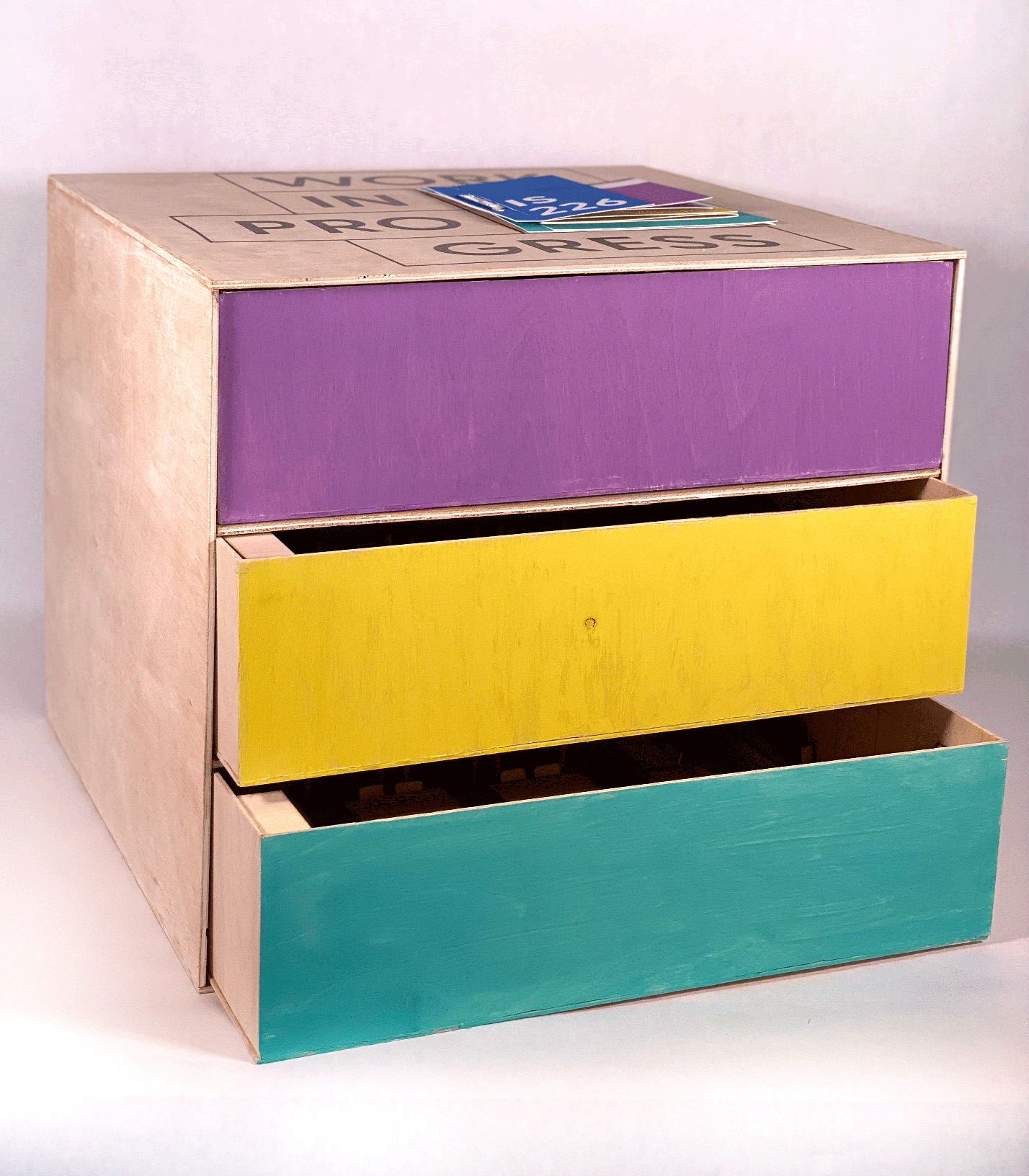
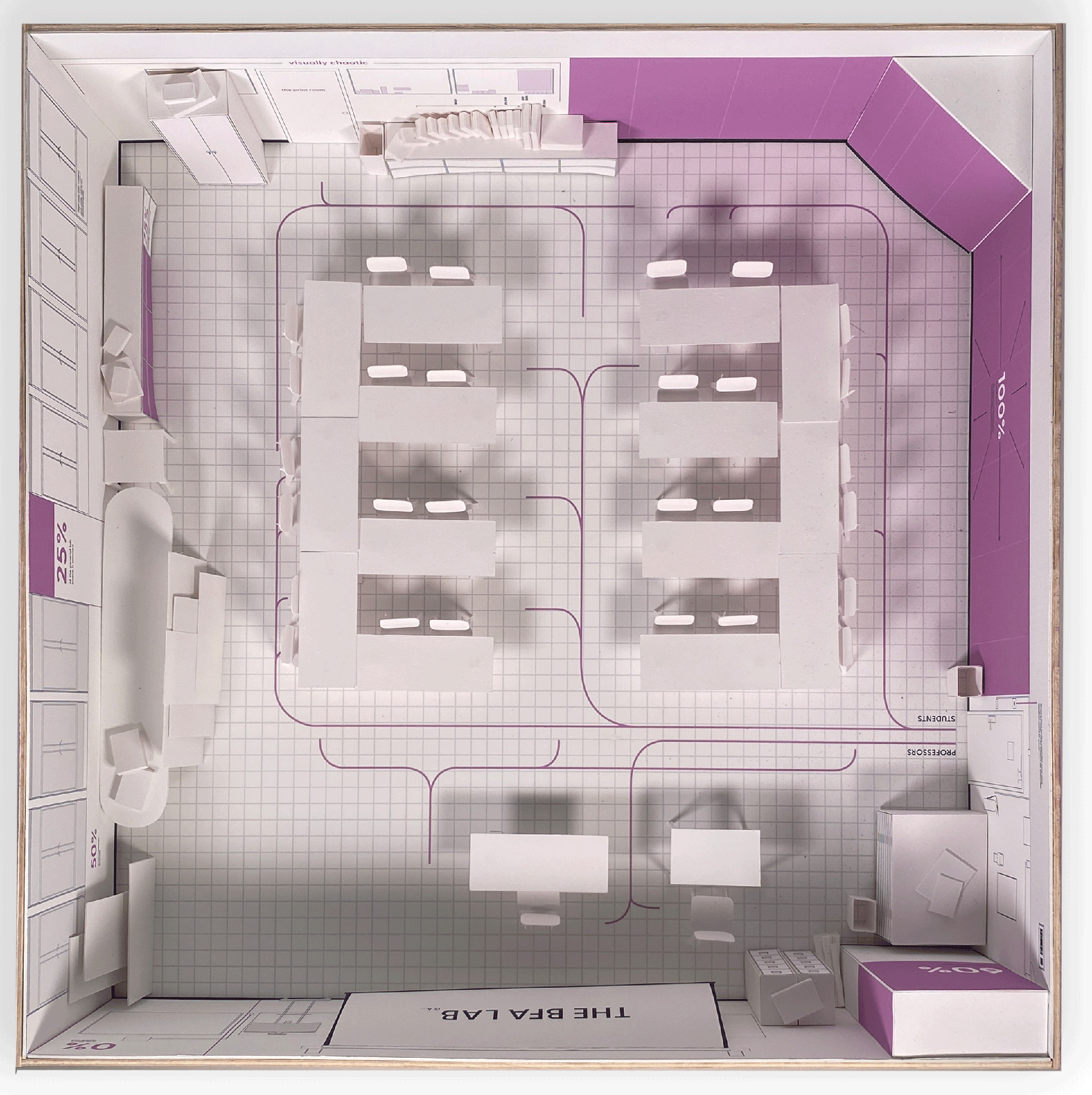
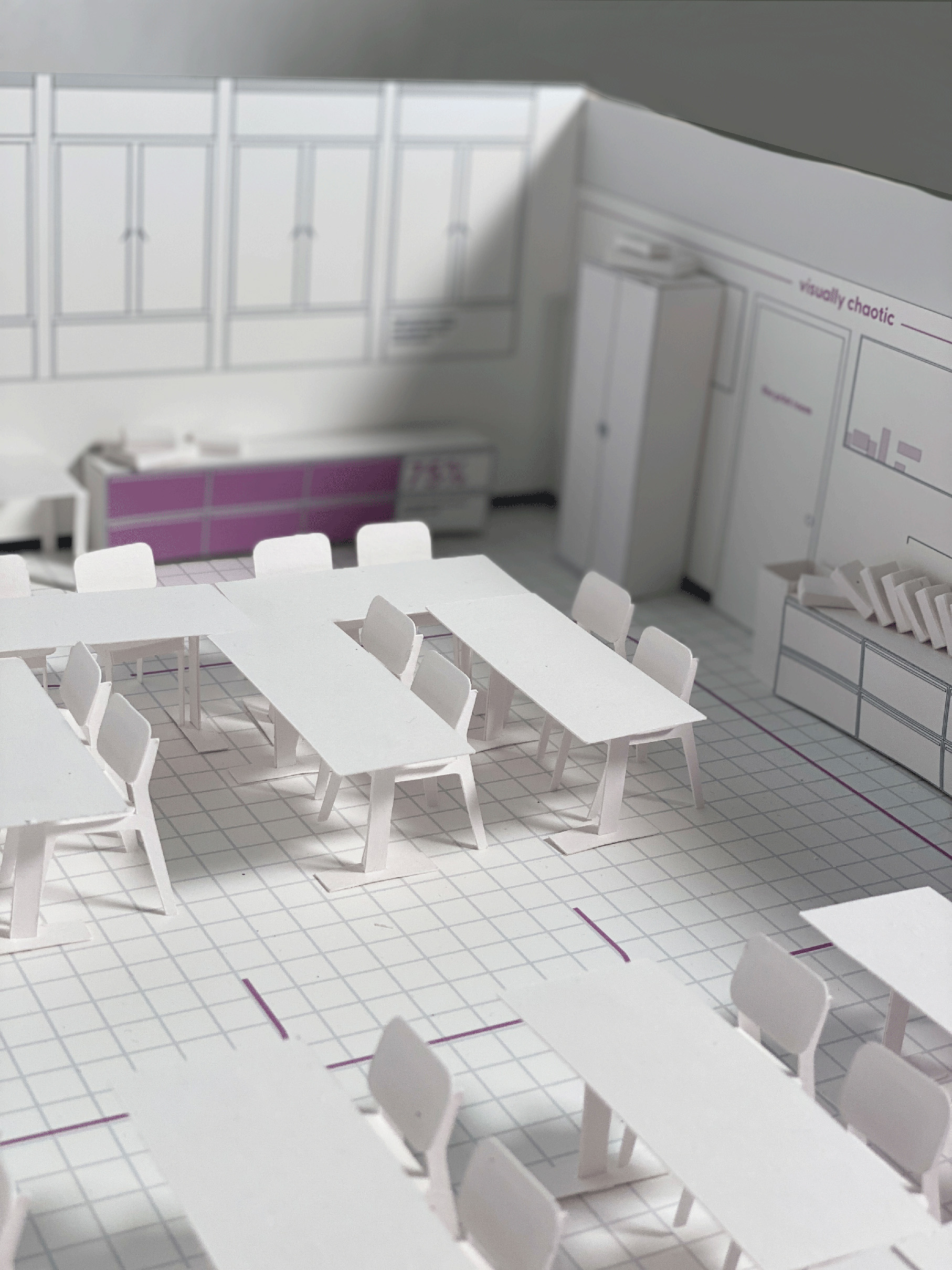
Research Questions
-
How are our behaviors defined by our creative workplaces? How are these workplaces defined by our behaviors?
-
What are the factors that define our emotional response to our creative workplace?
-
How do the workplaces we occupy determine our identities as future creative professionals?
Outcome
My three-tiered model is to serve as a research and educational tool for incoming BFA students and professors that will inhabit the graphic design lab. The goal is to show how this studio space is currently operating, provide a solution based on that analysis, and allow the viewer to experiment with layouts that will create a positive work environment for them.
Advisors
Connie Hwang–Primary Advisor
SJSU Professor, Graphic Designer
SJSU Professor, Graphic Designer
Diana Seah–Secondary Advisor
SJSU Professor & Program Coordinator, Interior Design
SJSU Professor & Program Coordinator, Interior Design
Primo Orpilla–Tertiary Advisor
Interior Designer, Co-Founder of O+A Studio
Interior Designer, Co-Founder of O+A Studio
Process Book


